The Day Tradition Died
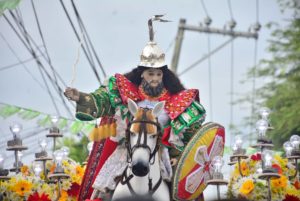 SALUBONG is a Tagalog word I have always associated with St. James, the Apostle, better known as Santiago Apostol to Plarideleños – the people of my hometown, Plaridel, in Bulacan Province. Santiago Apostol is our town’s patron saint, the star of the show held on December 29 of each year. It is the start of a two-day town fiesta in his honor– the day when parishioners and devotees from my town and other places as far as Manila dress up in native costumes to fetch the image of Santiago Apostol from his residence in a little village in Plaridel. The home is called Sipat, where he is housed all year round except from December 29 till the second Sunday of January. Next to Jesus Christ, he takes center stage in our town’s parish church.
SALUBONG is a Tagalog word I have always associated with St. James, the Apostle, better known as Santiago Apostol to Plarideleños – the people of my hometown, Plaridel, in Bulacan Province. Santiago Apostol is our town’s patron saint, the star of the show held on December 29 of each year. It is the start of a two-day town fiesta in his honor– the day when parishioners and devotees from my town and other places as far as Manila dress up in native costumes to fetch the image of Santiago Apostol from his residence in a little village in Plaridel. The home is called Sipat, where he is housed all year round except from December 29 till the second Sunday of January. Next to Jesus Christ, he takes center stage in our town’s parish church.
Salubong (in this context, to fetch or collect our patron saint from his home chapel to bring to the parish church) is a Plaridel tradition. It is one tradition that transports me to my childhood memories of December 29. The time when our mother would take my elder brother and me to town. Once there, we would stand and wait at a specific corner of the street where the crowd gathered, eagerly awaiting the arrival of the float carrying the image of Santiago Apostol perched on a white horse.
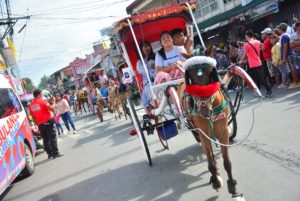
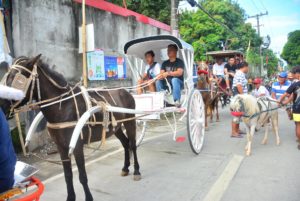
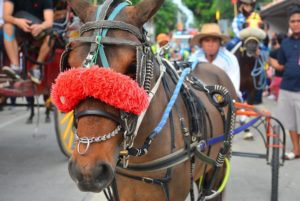
Spearheading the entourage would be equestrians, tilburies, and calesas (buggies) specially decorated with buntings for the occasion, trailed by older women like grandmothers dressed in colorful native costumes and dancing to the music of marching brass bands. Like the other kids, my brother and I, jaw dropped, would be mesmerized seeing dancing horses. That was a treat we always looked forward to at that time of the year. My brother and I would go home, each with paper mache horses sold at the church entrance, tucked in our underarms. Oh, the tears I would shed inside the church when my beautiful balloon bought by my mother for me would get loose from my grip five minutes or so after she paid for it, floating on the church ceiling, joining other balloons that have slipped from the hands of other kids. I cried because I was not getting another one. My fault — my mother would remind me. She told me to wait until the misa (mass service) was over before getting a balloon, but I would not listen. I would end up having a stiff neck looking up at the ceiling during the mass done in Latin – a special holy mass celebration called misa cantata that took forever to end. To a young boy like me, it was just theatrical with actors like the cura parocco in his best Sunday “dress” as the leading man and the bevy of other priests as supporting cast. These priests were of lesser significance, I deemed. If they were of the same rank as the cura, why would they do the “dirty” job for him – handing him everything he needed, turning the pages of the holy book even so he could read them?
Thoughts of a young boy tired and bored, whining the whole time, soaked in sweat because the church was packed with devotees; it was burning hot. The shrill voices of women sínging Kyrie Eleison would jolt me, torturing me big time. I was talking about the frustrated-town sopranos – Aling Enyang and her understudy, Chitang. Chitang who? I thought I saw women in the pew, rosary beads dangling from their hands, giving each other a knowing look, then silent whispers. Rest in peace, Aling Enyang, and Chitang.
Across the street from the church was the local Perya (fair) I cherished much because of the childhood treats waiting for me—the Ferris wheel ride, the choo choo train, and the traveling circus featuring clowns, little people, and human oddities like babies who never seem to grow and get old despite their beard stubs. While I never enjoyed the sight of babies advertised as duendes (goblins), the clowns amused me no end. There would be games like beto-beto (I realized much later that it meant bet, oh, bet, oh!), a perya game of dice in a small saucer covered by another small saucer. Numbers were inscribed on the beto-beto table for gamblers like me to place their bet. I am trying to remember the mechanics of the game. I remember, though, that the beto-beto guy—the operator—would shake the saucers with the dice inside, and when he released the dice on the table, there would be more losers than winners. I always lose. I remember the boiled apulids (water chestnuts) you eat after peeling off the black skin—a tedious task. You end up with your teeth dotted with tiny black specks that were the apulid skin. I remember the popcorn, the nilagang mani (boiled peanuts cum shell), and the pink, red, and yellow sugar cotton candy. Childhood treats, indeed!
The feast day of Santiago Apostol would only be complete with the serenata held in the open air in the town plaza. It is usually a competition between two marching bands who, on the night of December 29, would try to outdo each other for one hour or so, showcasing their skills at playing brass instruments before a crowded audience. Then, against my mother and aunt’s knowledge, I would slip out of the house and meet other kids, like my cousins, from the neighborhood. Together we would head on foot to the plaza where the serenata was happening. The serenata was one highlight of the fiesta I tried not to miss, risking my mother’s wrath and fury when she found out. I only had to ask her permission, she would say. But, of course, the answer would be a firm No, anyway, so why bother?
Another highlight of the celebration of my childhood Salubong was the crowning of Plaridel’s Fiesta Queen on December 30. She was the girl who managed to sell more tickets than the other girls in the competition. Naturally, I am curious to know how much money went to the coffer of the fiesta organizers. Still, I assumed that the amount, no matter how big or small, was spent for a good cause – never mind the number of carabaos the family of the winner had to give up for the crown. Santiago Apostol was pleased for sure.
On the second Sunday of January, the devotees of Santiago Apostol gather once again at the church plaza to bring him back to his permanent home in Sipat until it is time for the next Salubong. Hatid (Deliver), on the other hand, is the time when Santiago returns to his permanent residence. Unlike the Salubong, the Hatid brings less pomp and pageantry, but it would still be a celebration. Over the years, there would be fewer and fewer equestrians, horse-drawn tilburies, and specially-decorated calesas like they used to have in the Salubongs and Hatids of my childhood. Still, there will always be devotees to keep Santiago Apostol company when he goes home. I am now in my seventies, and so are many of my childhood friends in the neighborhood, who used to get excited when it was Salubong time. Some of them are dead, like the Salubong tradition we knew so well.
The tradition died a long time ago. The last time I witnessed a Salubong procession was when I was home from abroad for a Christmas break, long before I retired from work. I was standing at the corner of a busy street where my mother used to drag my brother and me. I was again that little boy squeezing his way through the crowd, trying to get to the forefront for a better view of the float carrying the image of Santiago Apostol — perched on a white horse with equestrians and tilburies spearheading the procession. Trailing them would be women in native costumes, dancing to the music of a marching band. Motorists were not allowed to enter the main road. The last time I observed the Salubong, I remember feeling disappointed when I saw fewer equestrians, horses, and calesas. They were becoming extinct, disappearing from the tradition we, children, have always associated with this tradition.
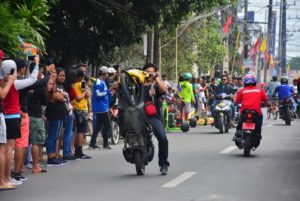 At my age, when big crowds and noise can quickly drive me nuts, I have stopped, sad to admit, taking part in the Salubong. However, a friend who lives in the same city abroad as I do tries to come home every year for this festival. It is her Panata (devotion) to our patron saint. She confirmed that the Salubong had lost almost everything we parishioners remember about the tradition.
At my age, when big crowds and noise can quickly drive me nuts, I have stopped, sad to admit, taking part in the Salubong. However, a friend who lives in the same city abroad as I do tries to come home every year for this festival. It is her Panata (devotion) to our patron saint. She confirmed that the Salubong had lost almost everything we parishioners remember about the tradition.
The Salubong is no longer the Salubong I remember as a child. Horse riders, horses, tilburies, and calesas are getting rare. Instead, tricycles and motorbikes are taking over. I’d rather have a few horsemen, horses tilburies, and calesas than have James Fonda-wannabes – daredevils – perched on their bikes. They create severe noise pollution and burn gaseous fuels producing climate hazards.
A young motorbike rider, when asked by some spectator to refrain from running his motor in full blast, replied that a motorbike has always been a part of the tradition. Hello? Since when? For three years, maybe? My micro-bladed eyebrows arched to the 7th heaven when somebody in my hometown said we could not forbid people from riding on motorbikes during the Salubong; it is a fundamental human right. A human right, my foot! Have we seen people riding on bikes during the Quiapo fiesta, where the divine image of Jesus Nazarene is brought out of its shrine for a procession? Jeez! It would be a sacrilege! Likewise, motorbikes are not allowed when Pulilan town in Bulacan observes its annual carabao festival in May. Try and scare the living lights out of this beast of burden! Why can’t we maintain ours? We can do it without motorbikes.
The issue may not be for the municipal government, but it can always discuss the problem with the church management. Let’s not forget that the constituents of the local government are church parishioners, too, who, like me, would be happy to keep the Salubong tradition going sans the disgusting noise tricycles and motorbikes create. So let us keep the tradition alive, solemn, and meaningful the way it was.
We are calling the attention of the Parish priest of Plaridel, Bulacan.
On a happy note, we still have enough women folks and devotees keeping the tradition alive and kicking with their traditional dancing. But for how long? Marching bands would rather play techno music that the women can hardly cope with the rhythm. Apropos, marching bands, are they getting irrelevant?
Sighs!
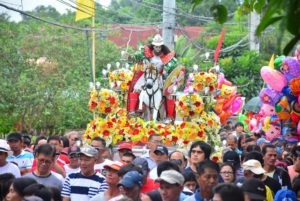
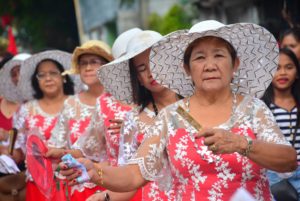
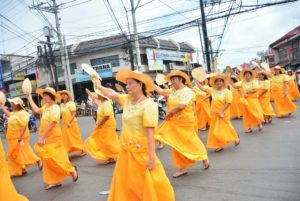
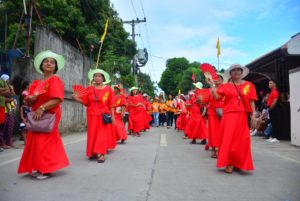
This took me back to my childhood years when mama used to buy me a balloon, but after mass, not before. I had to earn it by behaving myself during mass – no chatting and no complaining.
My mother would buy me before the mass for her own sake. I was driving her nuts! :)
I’m also kinda disappointed. Imagine, doing very noisy motorcycle trick show near the Quingua Church will make the church services to interrupt because of it. Second, because of many motor vehicles (motorcycles and tricycles) joining the parade, it causes a lot of pollution all over the parade route. “Kaya nga may time na hirap akong huminga dahil sa kanila. ANG DAMI NILA KAYSA SA MGA KABAYO.” (There is a time that I experienced difficulties in breathing because of them. THEY ARE SO MANY THAN THE NUMBER OF HORSES.) For the past five years of joining the Salubong Grand Parade every December 29, I observed the gradual increase of motor vehicles every year. Around two to three years ago, the motor vehicles’ assembly point was at the boundary of Sipat and Lumang Bayan. Last year, the motor vehicles’ assembly point was near the Plaridel Airport, indicating that the start of that parade was near the airport instead within Barangay Sipat. I’m in favor of motor vehicle regulation for the next Salubong Fiesta to preserve the tradition of Salubong.
Hopefully, the municipal office and the Parish priest take not of this observation.